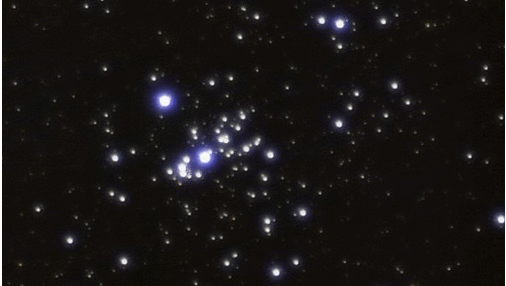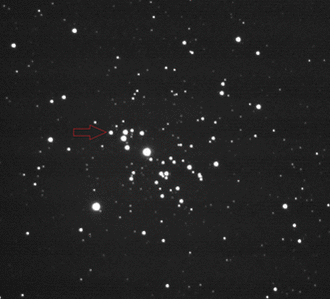Forum Replies Created
-
AuthorPosts
-
 DawsonParticipant
DawsonParticipantIan, you certainly don’t need a college education or an in-depth understanding of maths to use a computerised telescope. It is something which is much easier to learn from someone else, hands-on, than trying to read a manual though. If you have access to a local club or society I would strongly encourage you to get acquainted with them and get some help. Understanding some basic maths is useful for some aspects of astronomy, for celestial coordinates, working out magnification etc, but you’ll get by fine without it. Having an open mind, patience and a willingness to learn something new is far more important, as some computerised telescopes are not always as intuitive as they could be.
Good luck.
James
 DawsonParticipant
DawsonParticipantMy 14mm Samyang has some aberration at the edge when the iris is wide open; I’d just assumed this was the common given the enormous field of view and the relative affordability of the lens.
James
 DawsonParticipant
DawsonParticipantI was there for the BAA Summer Meeting on the Saturday and stayed for the first part of the morning session on Sunday for the spectroscopy talks. Excellent event.
 DawsonParticipant
DawsonParticipantRoy
Thanks for the message. Yes, it is interesting. I suspect you could conduct some transmission tests to numerically compare the light transmission of the three eyepieces. I guess I could do this with one of my CMOS cameras, but not sure how sensitive it would be to the differences between them and probably difficult to standardise the alignment etc between the light source, eyepiece and sensor. Maybe a project for a rainy month… But we are both very grateful for the Tolles.
As for the broken image, the image appears fine on my browser (Chrome) as the screen shot hopefully shows. The image of the results is hosted on my members page as when I tried to upload it to the forum the forum algorithms resized it to 640×480 and the text was not legible, so I cheated and linked to a higher resolution version allowed by the members pages. There may be a way to get higher resolution images in the forum, as I’ll ask the clever technical guys. If the image preview isn’t showing for you, it may be your browser; maybe try a different browser. Having said that, I’ve just looked on my iPhone and the images doesn’t display there.
Regards
James
 DawsonParticipant
DawsonParticipantIan,
Welcome.
Yes, there is a lot to get your head around.
I would advise finding a local society to get involved with. They probably hold regular meetings and star gazing events. If you email me your nearest city I can have a look online and see what groups are near by.
I wouldn’t rush to make any decisions about buying equipment or deciding what sort of amateur astronomer you are. Go with the flow as they say.
There are plenty of books to read and magazines and forums [fora].
Learning your way around your own night sky is a great place to start with practical astronomy. The major constellations, and any visible planets. A bog standard pair of binoculars are useful for looking at some of the brighter targets in the sky, such as globular clusters and open clusters and the Andromeda Galaxy. Binoculars are also useful for getting a closer look at the Moon.
If there is a meteor shower coming up, that is always fun to observe, ideally on a sun lounger in a sleeping bag or two!
If you are hands on and like tinkering with either mechanical things or electronics there is so much tinkering to be done with equipment and the like, and again lots of fascinating stuff to read. Or maybe you are so hands on you’d like to build your own telescope.
I enjoy reading. I don’t enjoy getting cold. I have various telescopes but I don’t have a permanent set up, so I don’t use them as often as I should. Many believe an observatory isn’t a luxury for an amateur astronomer, it is an essential tool. I like imaging the planets and the Moon, and showing non-astronomers things through the telescope like planetary nebula or globular clusters. I’m also interested in the history of astronomy, and like reading about the goings on several hundred years ago, as well as from the 19th and 20th centuries.
The BAA Journal has some fascinating content and as a BAA member you can look through past copies of the BAA Journal on the website. The Journal also contains sky notes to help you learn more about the night sky. The members pages are great for looking at things others are up to, and if there are things you want to know more about you can either leave a note on peoples observations, or start a thread on the forum.It will be very exciting for you.
Welcome and enjoy.
James
 DawsonParticipant
DawsonParticipantCallum,
I had trouble with ” and ‘ but then I try and remember that seconds, are second (2nd) and therefore the magic number is 2 so they are “
James
 DawsonParticipant
DawsonParticipantGrant,
I use a dew shield with a built in dew strap on my C11. I can’t remember where I got it from, but looking online it seems they cost in the region of £100 now!
No idea about the dual mounting for such big [heavy] scopes, but clearly can be done:
http://www.mikesastro.com/equipment/lx200r/C11vsLX200R.html
James
 DawsonParticipant
DawsonParticipantThanks Steve
 DawsonParticipant
DawsonParticipantInteresting. Thanks.
 DawsonParticipant
DawsonParticipantGreat images – not at all jealous Nick!
We’ve started a brief article on the front page to showcase these as they come in. So pleased the weather was good.
https://britastro.org/node/10981
James
 DawsonParticipant
DawsonParticipantPaul, that is great, thank you. If it is clear here in Nottingham (not looking good at present) I was planning to try and watch the start of it, but the forecast is awful, and I don’t finish work until 7:30. That link will allow me to feel part of it.
 DawsonParticipant
DawsonParticipantIt will “work” but it won’t last for multiple nights, and depending on how much fast slewing you do around the sky vs finding one target and letting it track all night, it may run out of juice after 4 hours or so. If you plan to run anything else off this supply, like dew bands, lights, laptop, motorised focuser, CCD then you need to think again.
It will need recharging after every session, and I suspect you will discharge it quite deeply so over the coming year or two you may well notice it retains less and less charge.
If this is just to power the mount, then I would just get someone who is OK at electronics to knock up some polarity safe-terminals on the end of an old car battery (40-60 amp hours); most garages will let you have one for £5 as they just go to the scrap man for the same price. Take a multimeter and pick one which has a resting voltage of >12.5v if possible, but at least >12v. You’ll need a trickle charger like this (https://www.amazon.co.uk/12v-Motorcycle-Trickle-Charger-SWTBC2/dp/B006B3MI8W/ref=sr_1_sc_1?s=electronics&ie=UTF8&qid=1503046011&sr=1-1-spell&keywords=charger+12v+streetwise). Stick it in a box, terminals on the outside. Job’s a good un, and all for under £40.
Deep cycle batteries would be better if you are using dew bands and other stuff, but an old car battery in ok condition will last many years if taken care of. I’ve only just recycled the ones we used at our observatory, and apparently, they were obtained 12 years ago.
James
 DawsonParticipant
DawsonParticipantAndrew, it is your username that is “home”. To everyone else you appear as Andrew Thomas, the only time another user will see “home” is if they try to send you an email, it will say “home” and not Andrew Thomas. You also have to remember if as this will be the name you log in with. I think you are stuck with it.
James
 DawsonParticipant
DawsonParticipantAndrew, make sure you are logged in to the website, and then go to this page: https://britastro.org/user/2825
Click “Edit account details”.
Have a look in there and see what you can change or not change.
James
 DawsonParticipant
DawsonParticipantDavid,
Making another animated GIF of your original image with the astrobin image, I can’t see any vanishing stars this time:

 DawsonParticipant
DawsonParticipantDavid,
I’ve made a quick animated GIF of the two images in your post (I’ve inverted the black and white in the AAVSO plot). There are lots of “differences”. I suspect some may be non-stellar objects. How accurate is the AAVSO chart, how are these charts constructed, and how old are they; might some also be proper motion of stars? Will be interesting to see what others say.

 DawsonParticipant
DawsonParticipantThanks both. That is interesting.
James
 DawsonParticipant
DawsonParticipantListen to Mike talking about the Reverend, 2 hours 42 minutes in:
http://www.bbc.co.uk/programmes/p056zgjp#play
James
 DawsonParticipant
DawsonParticipantYes, I’ve cast my vote. Good luck Revd Pearson!
 DawsonParticipant
DawsonParticipantPretty spectacular.
-
AuthorPosts
